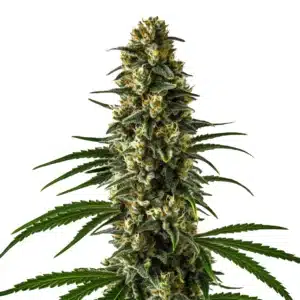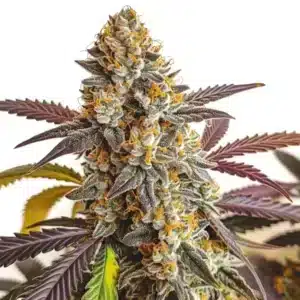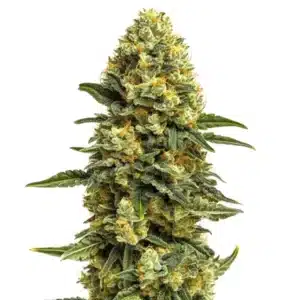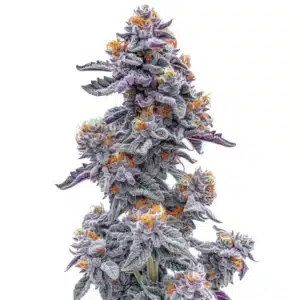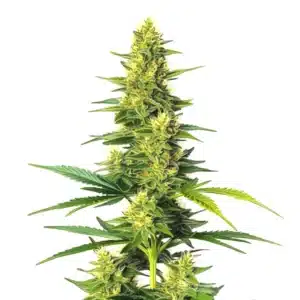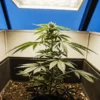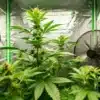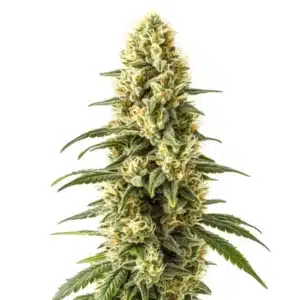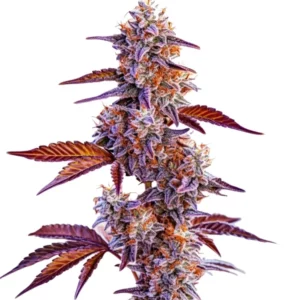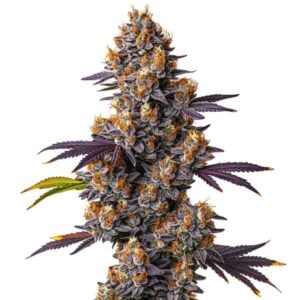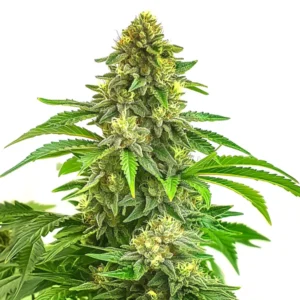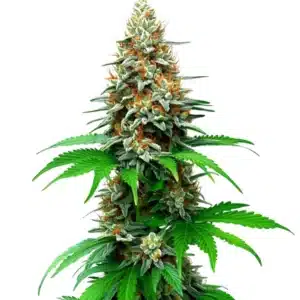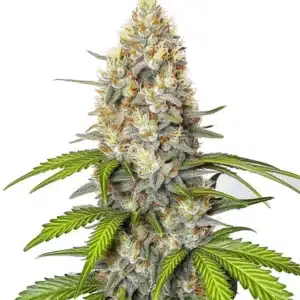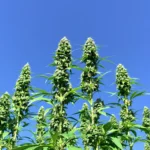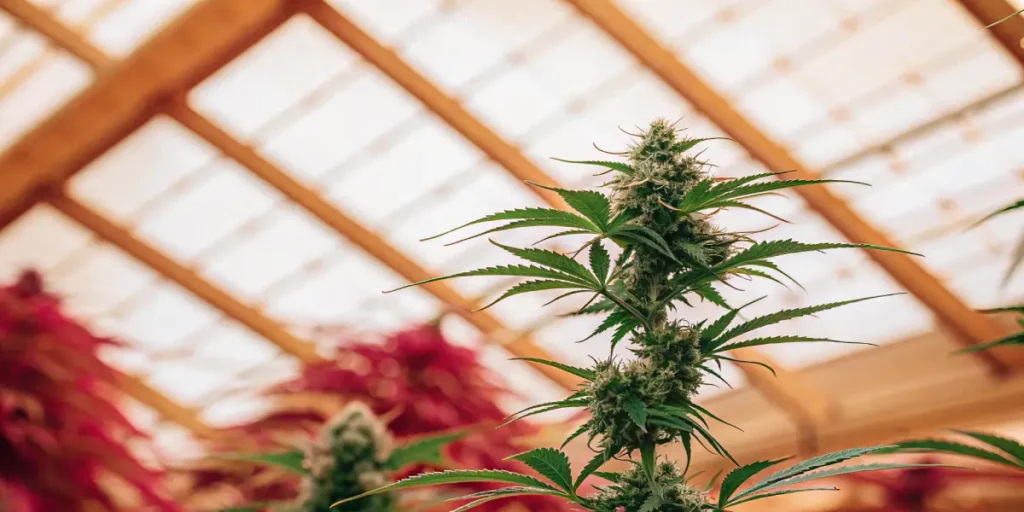
How to Improve Cannabis Branching
Growing cannabis with robust branching is crucial for maximizing yield. Better branching means more bud sites, and who doesn’t want that? Whether you’re just starting out or have been cultivating for years, learning how to improve cannabis branching can take your garden to the next level. It’s all about knowing the right techniques and applying them to your plants.
Many growers focus on the main stem, but the magic happens with lateral growth. Encouraging cannabis plants to develop more branches leads to a bushier plant, capable of supporting more buds. This isn’t just about quantity; quality improves too. Stronger branches can hold more weight, supporting larger, more potent flowers.
Recommended Strains
Blue Dream
|
|
THC | 17% - 24% (Medium) |
|
|
Type | Feminized |
|
|
Yield | High |
|
|
Phenotype | 50% Indica / 50% Sativa |
Girl Scout Cookies
|
|
THC | 18% - 25% (Medium) |
|
|
Type | Feminized |
|
|
Yield | High |
|
|
Phenotype | 60% Indica / 40% Sativa |
Choosing the right strains can also make a big difference. For instance, Blimburn Seeds offers strains like Blue Dream, known for its strong branching, making it easier to train and optimize. By pairing the right strain with effective techniques, you’ll see significant improvements in your garden.
Best Techniques for Cannabis Branching Improvement
Pruning is one of the best techniques for cannabis branching improvement. It involves removing parts of the plant to encourage healthier and more vigorous growth. By trimming away less productive growth, you can direct the plant’s energy to the branches that matter. This results in better airflow and increased light penetration, both of which are essential for optimal growth.
Topping is another method that works wonders. When you cut the main stem, the plant responds by producing two new main branches. This technique not only increases the number of branches but also helps in creating a bushier plant. Many growers find that topping increases the overall yield by distributing growth hormones more evenly throughout the plant.
Beyond these, super cropping is an advanced method that involves gently damaging the plant to stimulate growth. This technique encourages the plant to grow stronger branches and can be particularly useful for how to improve cannabis branching in a controlled manner. It requires a bit more skill but can result in a more resilient plant structure.
Fimming is a variation of topping where you remove the top part of the plant, but with less precision. This can lead to multiple branches sprouting from the cut site, further increasing branching. Both fimming and topping are effective ways to learn how to increase branching in cannabis plants, each offering unique benefits depending on your growing goals.
Methods to Promote Lateral Growth in Cannabis
Low Stress Training (LST) is a gentle method that doesn’t involve cutting. By bending and tying down branches, you can shape your plant to grow horizontally. This not only increases light exposure but also encourages lateral growth. Over time, LST can lead to a wider canopy and more bud sites.
Another effective method is the Screen of Green (ScrOG) technique. By placing a screen over your plants and weaving branches through it, you can create an even canopy. ScrOG helps in maximizing the light each branch receives, promoting lateral growth and improving overall yield.
For those interested in how to improve cannabis branching, combining techniques like LST and ScrOG can be particularly effective. These methods complement each other by promoting a uniform growth pattern, ensuring that every branch receives adequate resources for development. This synergy is especially beneficial for growing environments with limited vertical space.
Additionally, the Sea of Green (SOG) approach can be used to enhance lateral growth by focusing on cultivating many small plants rather than a few large ones. This method ensures a dense canopy, allowing growers to make efficient use of space and light. When executed properly, SOG can be a valuable part of optimizing cannabis growth for better branching and increased yield.
Promos & Deals
Tips for Enhancing Cannabis Plant Bushiness
Feeding your plants the right nutrients is crucial. A balanced diet with enough nitrogen, phosphorus, and potassium supports healthy growth. However, don’t forget micronutrients like calcium and magnesium. These are essential for strong cell walls and can enhance bushiness.
Light is another key factor. More light means more energy for your plants to grow. Ensure your plants receive ample light by adjusting the height and angle of your grow lights. Proper lighting encourages bushiness by promoting growth across all branches, not just the top.
Knowing the growth stage of your plant is critical when applying tips for enhancing cannabis plant bushiness. During the vegetative stage, focus on providing abundant nutrients and light to support rapid growth. In the flowering stage, adjust your nutrient mix to prioritize phosphorus and potassium for bud development.
Moreover, regular inspections of your plants can help identify areas where bushiness can be improved. If you notice uneven growth, consider techniques like LST to balance the plant’s shape. These proactive measures are essential in learning how to improve cannabis branching in a comprehensive manner.
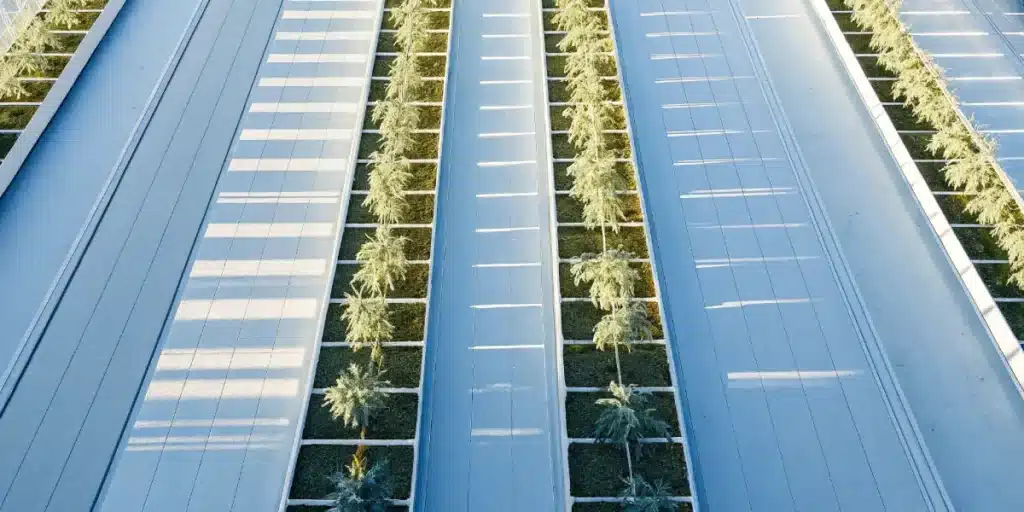
Optimizing Cannabis Growth for Better Branching
Temperature and humidity play vital roles in how to improve cannabis branching. Keeping your grow environment stable ensures your plants focus on growth rather than stress. Generally, a temperature of 70-85°F with a humidity level of 40-60% works best for most strains.
Regularly inspecting your plants helps catch issues early. Pests and diseases can derail your efforts, so look for signs of trouble daily. Healthy plants are more likely to develop strong branches and bush out as desired.
Managing airflow within your grow space is another crucial aspect of optimizing cannabis growth for better branching. Proper ventilation prevents mold and pests while ensuring that plants receive enough CO2 for photosynthesis. This foundation supports robust branching and overall plant health.
Furthermore, employing plant support structures like stakes or trellises can aid in maintaining branch integrity as your plants grow. These supports help manage the plant’s weight, preventing branches from breaking and allowing them to focus on producing healthy buds. These strategies are integral when considering how to increase branching in cannabis plants efficiently.
FAQs
How can pruning improve cannabis branching?
Pruning is an effective way to improve cannabis branching by removing unwanted growth and focusing the plant’s energy on producing more branches. This technique helps in shaping the plant and enhancing airflow and light penetration, which are crucial for healthy growth. By strategically cutting back certain parts, you encourage the plant to grow more vigorously and develop a robust branching structure.
Regular pruning can significantly increase the number of bud sites, leading to higher yields. It’s important to prune during the vegetative stage so the plant has time to recover and grow new branches. This method is especially beneficial for dense strains that need help in spreading out and maximizing their growth potential.
Besides to shaping the plant, pruning can also reduce the risk of disease by removing dead or damaged leaves that might harbor pests. This preventive measure ensures that resources are directed towards productive growth, further aiding in how to improve cannabis branching efficiently.
Moreover, when done correctly, pruning can stimulate the plant’s natural defense mechanisms, strengthening the remaining branches and preparing them for more substantial bud production. This comprehensive approach is ideal for growers aiming to optimize their plants’ structure and yield potential.
What is the role of nutrition in branching enhancement?
Nutrition plays a pivotal role in cannabis branching enhancement. Providing your plants with a balanced diet of essential nutrients supports overall health and encourages vigorous growth. Nitrogen is particularly important during the vegetative stage, as it promotes leafy growth and branch development.
Besides to macronutrients like nitrogen, phosphorus, and potassium, ensure your plants receive micronutrients such as calcium and magnesium. These nutrients strengthen cell walls and aid in the development of strong branches. A well-fed plant is more likely to grow bushier and produce a higher yield.
Knowing the specific nutritional needs of your plant at each growth stage allows for targeted feeding strategies. For instance, a higher nitrogen concentration is suitable during the vegetative stage, while increased phosphorus and potassium are essential during flowering, optimizing cannabis growth for better branching.
Furthermore, organic amendments like worm castings or bat guano can enhance soil quality and provide a slow-release source of nutrients. These natural additions can improve soil structure and microbial activity, contributing to a healthier root system and, consequently, more robust branching.
How does the environment affect cannabis branching?
The environment directly impacts how cannabis plants branch and grow. Temperature, humidity, and light levels all play a role in determining the plant’s growth patterns. Maintaining optimal conditions reduces stress and allows the plant to focus on developing robust branches.
Too much heat or cold can stunt growth, while incorrect humidity levels can lead to issues like mold or nutrient lockout. Ensure you’re monitoring your grow environment closely to provide consistent and ideal conditions for your plants to thrive.
Beyond basic climate control, the quality of light spectrum used in your grow space also affects branching. Utilizing full-spectrum LED lights can mimic natural sunlight more effectively, promoting healthier and more uniform growth throughout the plant’s lifecycle.
Additionally, maintaining a consistent light schedule is crucial for preventing stress, which can otherwise hinder branching and overall plant development. Gradually adjusting light exposure as plants transition from vegetative to flowering stages can ensure a smooth growth cycle, enhancing your efforts in how to improve cannabis branching.
Can specific strains improve branching naturally?
Yes, certain cannabis strains naturally have better branching characteristics. Some strains are bred for their ability to produce multiple branches and a bushy structure, making them ideal for growers looking to maximize their yield. Strains like Girl Scout Cookies and Blue Dream are known for their ability to develop robust branching without extensive training.
Choosing the right strain can simplify your growing process and improve the overall structure of your plants. If you’re interested in strains with strong branching potential, explore the offerings at Blimburn Seeds for options that align with your growing goals.
Moreover, understanding the genetic background of a strain can provide insights into its growth habits and branching potential. Indica-dominant strains often exhibit bushier growth patterns, while sativa-dominant strains may require more training techniques to achieve the desired structure.
By selecting strains that naturally favor robust branching, you can reduce the amount of intervention needed, allowing the plant to flourish with minimal stress. This approach is particularly advantageous for beginners learning how to increase branching in cannabis plants without extensive experience.
What are the benefits of using training techniques like LST and ScrOG?
Training techniques such as Low Stress Training (LST) and Screen of Green (ScrOG) offer numerous benefits for cannabis growers. LST involves gently bending and securing branches to encourage horizontal growth, while ScrOG uses a screen to create an even canopy. Both methods increase light exposure and promote lateral growth, resulting in more bud sites.
These techniques help in optimizing cannabis growth for better branching by directing the plant’s energy towards producing a wider and more productive canopy. They are particularly effective for strains that tend to grow vertically, allowing growers to make the most of their available space and light resources.
Besides to increased yield, LST and ScrOG can enhance the overall health of your cannabis plants by improving air circulation and reducing the risk of mold and pests. This holistic benefit underscores the importance of these methods in achieving robust branching and maximizing plant potential.
For growers with limited space, these techniques provide a practical solution for managing plant height and ensuring an even distribution of light. With practice, using methods to promote lateral growth in cannabis can lead to impressive results, making them a staple in any grower’s toolkit.



